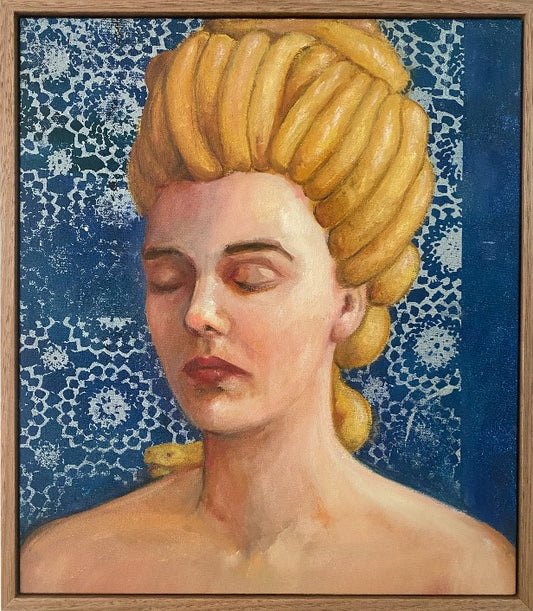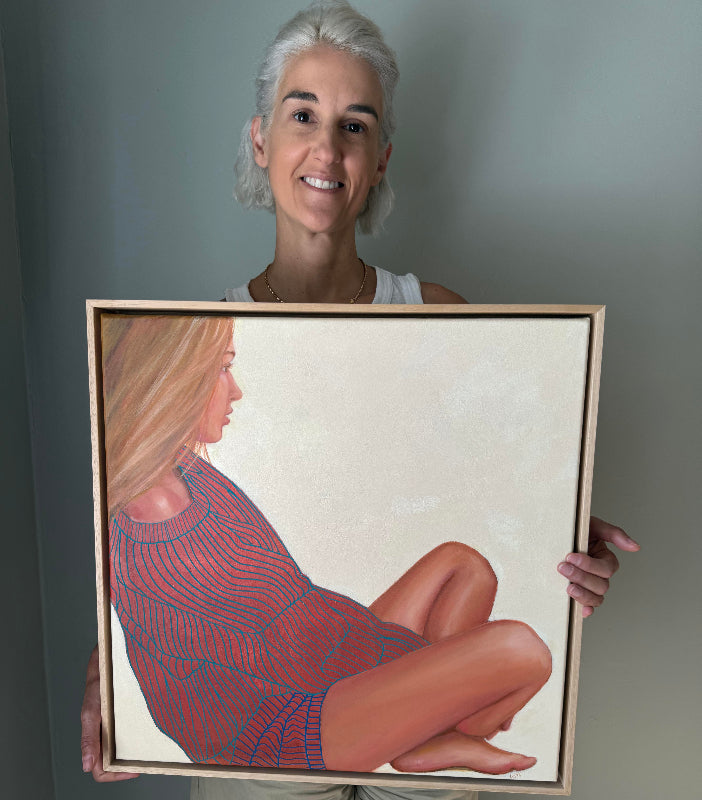
Medusa: How She Lost Her Head and Found her Voice
Unveiling the evolution of Medusa's portrayal in art through the ages
Like many ancient stories, the legend of Medusa has been retold, reshaped, reinterpreted and repurposed over time. Medusa has metamorphosed over the years through her depiction in popular culture. As part of my series on women in Greek Mythology, I have been investigating the origins of Medusa and how she has been depicted in the canon of art history. For my final painting of Medusa, I decided to paint her head only, because really that’s what she was: just a head.
You’ve probably heard of Medusa. She was one of the three monstrous Gorgons, who were described as winged human females with living venomous snakes in place of hair, whose gaze could turn others to stone. Medusa was decapitated by Perseus and her head, which still bore the power to turn men into stone, was given to the Greek god Athena.
Gorgons are mentioned in the earliest examples of Greek literature; however, they are described as heads only. Gorgoneions, which were protective amulets showing the Gorgon head, were worn to protect against evil spirits and were famously worn by the Greek gods Athena and Zeus. Gorgoneions frequently appear in Greek art at the turn of the eighth century BC. Due to their legendary powers, Gorgons were often depicted on objects and buildings for protection, much like gargoyles that were placed in front of churches and other buildings during the Gothic period.
Product Image: Pink Medusa painting by Leah Mariani
The story of Medusa was most likely invented by the ancient Greeks to provide a backstory, as well as a body, for these Gorgon heads. Further, the decapitation of Medusa’s head explains how a Gorgon's head became affixed to Athena’s breastplate. The name Medusa means guardian or protectress, and her head was used to strike fear into the hearts of Athena’s enemies. Jane Ellen Harrison, a British classical scholar, states that Medusa’s “potency only begins when her head is severed, and that potency resides in the head; she is, in a word, a mask with a body later appended...a ritual mask misunderstood." In this context, the head of Medusa is seen as a protective shield, and her story is merely a justification for the existence of her decapitated head.
Over time, depictions of Medusa changed. Before the fifth century BC, Gordons were depicted as terrifyingly ugly, with open mouths, large protruding tongues, menacing tusks, eyeballs almost popping out of their head, and snakes twisting all around. However, after the fifth century BC, Gordons were considerably less grotesque and by the Hellenistic period, they were positively radiant. Medusa had transformed from a monster into a mysterious, beautiful, seductive woman. She had evolved from a symbol of protection to a femme fatale: simultaneously alluring and dangerous.

Medusa’s image as a femme fatale is grossly outdated: she is due for a rebranding. In the wake of the MeToo movement, Medusa should be viewed as a symbol of protection. In my contemporary portrait of Medusa, I aim to give her a broad public appeal. Her eyes and mouth are closed to avoid making her look seductive or intimidating. The snakes’ heads are hidden by the edges of the canvas and their bodies are depicted in a rainbow of colour. A soft light falls on Medusa’s youthful face and in the background, we can see snippets of a soft, feminine pattern, which is the fabric over which this portrait is painted. Although she is demure, she has a set jaw and a strong chin, which gives her an air of quiet determination and resilience. Most importantly, her head remains attached to her body, allowing her to retain control over her body and mind. In this new age, Medusa has agency, and she is whole.
Medusa is neither a monster nor a temptress, although she is often depicted as such. She is a guardian and protector who can turn the male gaze against them. Who else is better suited as an icon for the feminist movement?
This article was inspired by D'Aulaires' Book of Greek Myths, which I read to my children at night, and was heavily influenced by Natalie Haynes' book Pandora's Jar.











